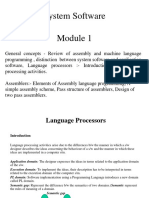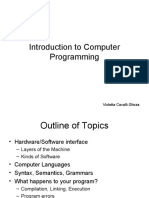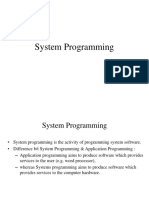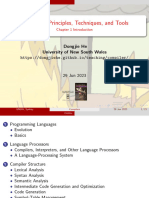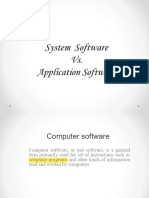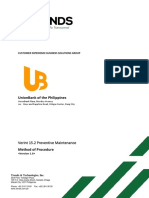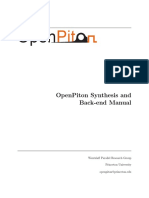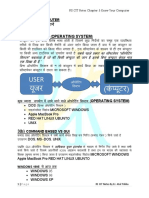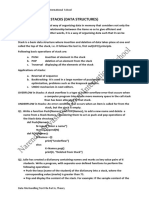0% found this document useful (0 votes)
79 views88 pagesUNIT-I Basics of System Programming
1. Lexical analysis breaks down the source code text into individual tokens like identifiers, keywords, operators, and punctuations. 2. Syntax analysis checks that the tokens follow the grammatical rules of the language by parsing them into a parse tree. 3. Semantic analysis validates that the program has correct and consistent meaning based on context and defined symbols and types.
Uploaded by
Shraddha SangoleCopyright
© © All Rights Reserved
We take content rights seriously. If you suspect this is your content, claim it here.
Available Formats
Download as PPT, PDF, TXT or read online on Scribd
0% found this document useful (0 votes)
79 views88 pagesUNIT-I Basics of System Programming
1. Lexical analysis breaks down the source code text into individual tokens like identifiers, keywords, operators, and punctuations. 2. Syntax analysis checks that the tokens follow the grammatical rules of the language by parsing them into a parse tree. 3. Semantic analysis validates that the program has correct and consistent meaning based on context and defined symbols and types.
Uploaded by
Shraddha SangoleCopyright
© © All Rights Reserved
We take content rights seriously. If you suspect this is your content, claim it here.
Available Formats
Download as PPT, PDF, TXT or read online on Scribd
/ 88







